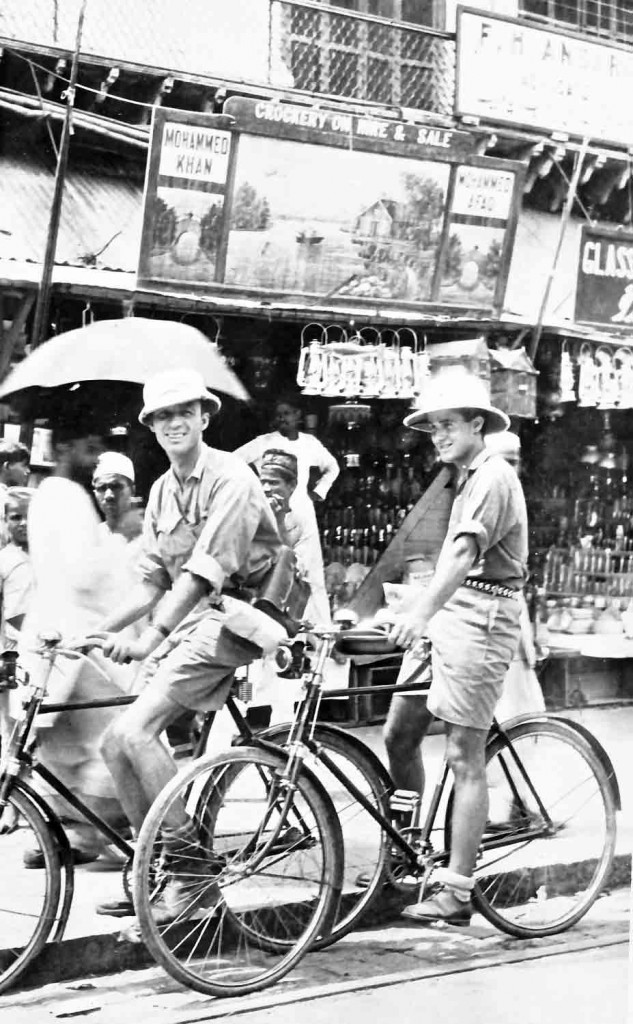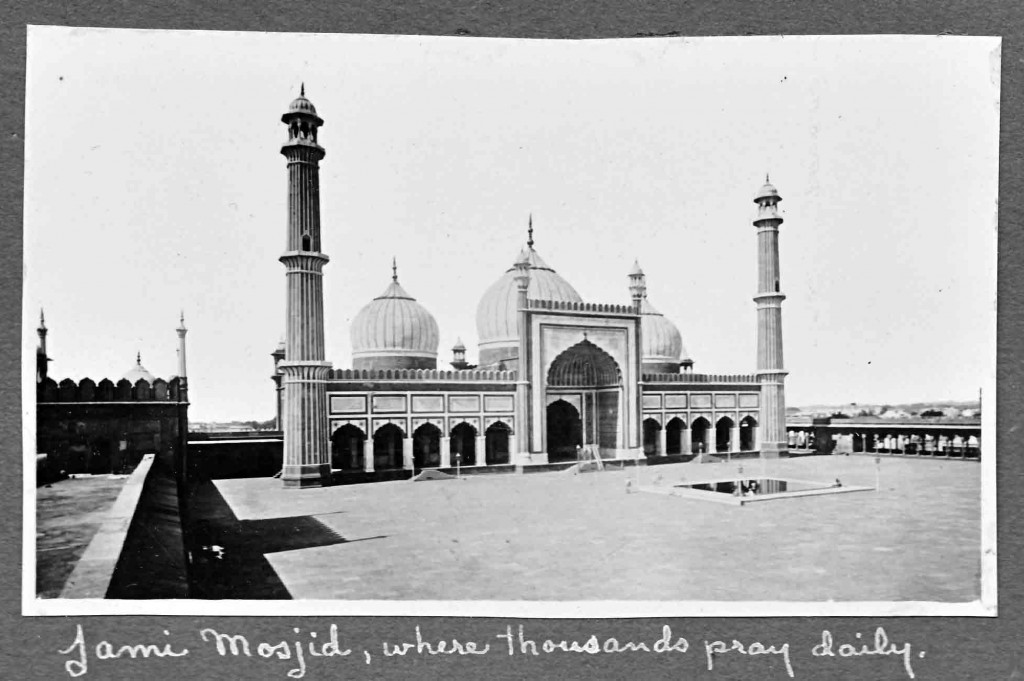Wednesday, May 8, 1929
This afternoon we visited the Fort again. Entering the Lahore Gate, the route led under a vaulted arcade. From a band gallery one looks down a long inner court 540 by 420 feet. Originally it was lined by arcades which have now been replaced by grass. At the other end of this court is the splendid Hall of Public Audience, the Diwan-i-‘Am, 100 ft. x 60 ft. The proportions of this hall with its columns and grailed arches are extremely good. The whole was originally covered with ivory-polished chunam [quicklime or plaster]. At the back in the raised recess, the Emperor used to be seated on his throne.
 A gate to the north leads to the innermost court of the palace and to the Diwan-i-Khás, or Hall of Private Audience, in which the Peacock Throne used to be placed, which was carried off by Nadir Shah. It was so-called from its having the figures of two peacocks standing behind it, their tails being expanded, and the whole being so inlaid with sapphires, rubies, emeralds, pearls, and other precious stones of appropriate colors, as to represent life. The throne itself was 6 ft. by 4 ft. wide. It stood on six massive feet which, with the body, were of solid gold inlaid with rubies, emeralds, and diamonds. It was surmounted by a canopy of gold, supported by 12 pillars, all richly emblazoned with costly gems, and a fringe of pearls ornamented the borders of the canopy. Between the two peacocks stood the figure of a parrot, said to have been carved out of a single emerald. This throne was only worth $30,000,000. The Hall is still one of the most graceful buildings in the world. 90 by 67 ft and built wholly of white marble, the dado of the interior walls and piers being inlaid with precious stones. The ceiling was once of silver, but has been restored with wood. At either end of the hall, over the two outer arches, is the famous inscription: “Agar Fardaus bar ru-i-zamin ast Hamin ast wa hamin ast wa hamin ast,” or “If there is a paradise on the face of the earth, it is this, oh, it is this, oh, it is this.”
A gate to the north leads to the innermost court of the palace and to the Diwan-i-Khás, or Hall of Private Audience, in which the Peacock Throne used to be placed, which was carried off by Nadir Shah. It was so-called from its having the figures of two peacocks standing behind it, their tails being expanded, and the whole being so inlaid with sapphires, rubies, emeralds, pearls, and other precious stones of appropriate colors, as to represent life. The throne itself was 6 ft. by 4 ft. wide. It stood on six massive feet which, with the body, were of solid gold inlaid with rubies, emeralds, and diamonds. It was surmounted by a canopy of gold, supported by 12 pillars, all richly emblazoned with costly gems, and a fringe of pearls ornamented the borders of the canopy. Between the two peacocks stood the figure of a parrot, said to have been carved out of a single emerald. This throne was only worth $30,000,000. The Hall is still one of the most graceful buildings in the world. 90 by 67 ft and built wholly of white marble, the dado of the interior walls and piers being inlaid with precious stones. The ceiling was once of silver, but has been restored with wood. At either end of the hall, over the two outer arches, is the famous inscription: “Agar Fardaus bar ru-i-zamin ast Hamin ast wa hamin ast wa hamin ast,” or “If there is a paradise on the face of the earth, it is this, oh, it is this, oh, it is this.”
The Royal Apartments and the Rang Mahal or Painted Palace, residence of the Chief Sultana, are of the same white marble, all having a marble water channel running through them. This channel starts in the Royal Baths. Farther south is the Mumtaz Mahal, which is now converted into the Delhi Museum of Archaeology. It contains many mutiny relics and etc. The Moti Masjid or Pearl Mosque is of white-and-gray-veined marble. It was built in 1659 at a cost of $160,000 rupees. To the north of these buildings lies the fine Hayat Bakhsh, or Life-giving Garden Court, 200 ft. square, full of tanks, water channels, pretty shrubbery and walks.
Leaving the fort we went to the Jami Masjid. In the great open space in front of it used to be some palaces, but these have all disappeared. This great mosque was begun in 1644 and completed in 1658. It is adorned with two imposing minarets 130 feet high. Like but few mosques, it is designed to give a pleasing effect externally. The minarets and domes, 201 feet high, and the towers are all graceful and pleasing to look at. The inner court is 325 ft. square.
Nearby the Chawri Bazaar leads to the SW section of the city. We rode through the crowded streets trying to find some Nautch Dances. Our directions took us down the Kazi Hauz and the Lal Kua Bazar. Plenty of girls on second-story balconies sitting under a light, nearly a solid mile of them, but they weren’t Nautch Dancers.
Next we spent some time in Chandni Chauk, the main drag and a mean bazaar. Bought several pairs of Indian slippers before returning to the hotel, 2 miles north. Wrote 5 hours on a letter to Dad, getting to bed at 2AM.
